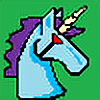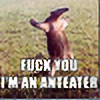HOME | DD
 Supaslim — Galloping Triceratops FINISHED
Supaslim — Galloping Triceratops FINISHED

Published: 2011-02-01 03:17:21 +0000 UTC; Views: 4075; Favourites: 79; Downloads: 77
Redirect to original
Description
I was originally going to give him gorgeous dark brown and yellow stripes, but I realized it would be incredibly hard to animate.For those wondering why my triceratops has no cheeks: I am of the belief that they had full beaks. There are no muscle attachments in the area to suggest fleshy cheeks, and as they are far more closely related to birds than mammals... I agree with the idea that it's more likely that their beaks extended back all the way.
For more info: [link]
For the second sketch: [link]
Related content
Comments: 28

absolutely gorgeous animation and i love how realistically his fleshy folds move as he runs!
👍: 0 ⏩: 0

interesting, but one thing don't look as movable there, the spine. (in the scetch version is that easyer to see, here is it just something that look not s natural as it should)
YOu only move the shoulderbone, but the most land animals move the spine whyle they are walking - some more some less - i just belive at this speed this kind of dino moved it, too
👍: 0 ⏩: 2

Triceratops would have been very stiff bodied, so not much motion in the spine. I agree that something's off, though. Maybe I'll revisit this some day and fix it. Thank you!
👍: 0 ⏩: 0

Actually, I think that a good reason for the spine to be more fixed in this example is the evidence we see when comparing it to other large land animals. This is not a small creature, it's frame is very solid and too much flexibility in a creature of this mass is probably more of a weakness than a strength.
For example, take a look at this video of elephants moving at speed: [link] . As you can see, there is a great deal of movement in the head and limbs, but a precise analysis of the spine throughout the stride shows very little flexion at all, if any.
Additionally, compare these two images of triceratops and elephant skeletons: [link] and [link] . In particular, pay close attention to the fused sacral vertebrae on the triceratops - these are massive creatures and it shows in the reinforced and therefore inflexible spines.
I think it is reasonably safe to assume that animals of this size could not be flexible as well as massive.
👍: 0 ⏩: 2

Without even a single drop of rum!
👍: 0 ⏩: 0

ah, i forgot that and have rarely seen a rhino or a cow running (i guess a rhino should be used)
and they was as big as an elephant? i guessed they would be a bit smaler - but i don't know
👍: 0 ⏩: 1

From a cursory glance into Wikipedia and the WWF, these are the generally accepted statistics:
Triceratops - 8-9 meters long, 3 meters tall, weight estimates range from 6-12 tonnes.
African Elephant - 6 meters long, 3.2 - 4 meters tall, and between 4.5 and 5.8 tonnes.
The elephant is a taller creature, but as for overall mass and length it just doesn't meet the bar.
👍: 0 ⏩: 1

oh, they are bigger as i ment! (i mean the dinos)
👍: 0 ⏩: 0

The beak-all-the-way argument makes no sense. The fact that there are a line of inserts for blood vessels (suggesting blood supply to something other than a beak), and not a sculpted surface or ridged surface suggesting an actual keratinous covering, to me indicates that it was covered by elastic skin (like at the corner of a bird's mouth), not muscular cheeks.
I'm sorry, not to blame you of course, but the idea is just stupid, why have all that lovely chewing mechanism, if the food will just fall out the sides???
👍: 0 ⏩: 1


Thanks for the comment!
👍: 0 ⏩: 1































